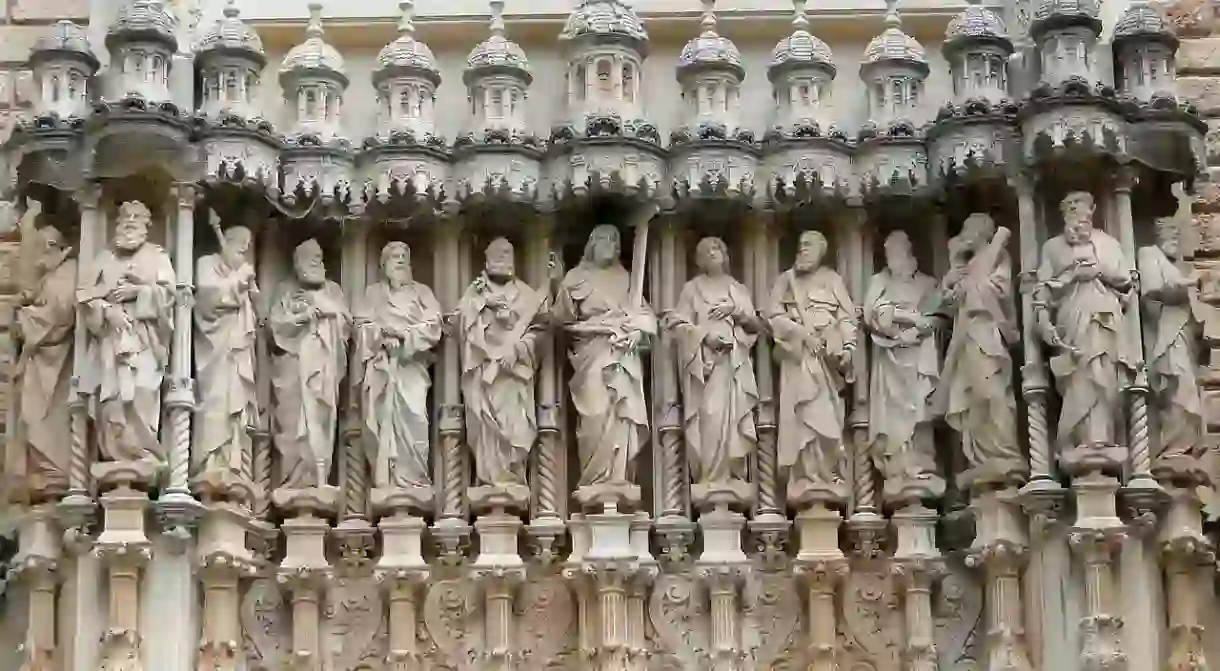The Most Beautiful Churches and Monasteries in Catalonia

A historically devoutly religious country, Spain boasts some rather impressive churches and other religious sites. If many have suffered with the passing of time, others have been incredibly well-preserved and are today as remarkable for their architecture as their sanctity. Here are some of the most beautiful churches and monasteries you need to visit in Catalonia.
The Sagrada Família
Quite probably one of the most unique churches you will ever set eyes on in your life, the Sagrada Família is one of Spain’s most famous landmarks. Designed by renowned Catalan architect Antoni Gaudí, the church is of yet still not finished despite construction work starting in 1882. Its jaw-dropping design is typical of Gaudí’s Modernist style with a prevalence of curves over straight lines, natural themes and religious symbolism.

Santa Maria de Montserrat Abbey
Located not very far from Barcelona, Montserrat mountain is easily recognised thanks to its jagged appearance which earned it the name ‘Serrated Mountain’. The Santa Maria de Montserrat abbey was founded in the 11the century and boasts a beautiful 19th century basilica as well as a museum with a collection of paintings by esteemed artists. Although what really makes this abbey outstanding is its location at an altitude of 1,236 metres above the valley floor.

Pedralbes Monastery
Located in the Pedralbes neighbourhood of Barcelona, the Pedralbes Monastery was founded by King James II of Aragon for his wife Elisenda de Montcada in 1326. The Gothic building has housed an order of Franciscan nuns throughout much of its history and although today part of the building serves as an art museum dedicated to religious art, a handful of nuns still live there today.

Barcelona Cathedral
Officially the Cathedral of the Holy Cross and Saint Eulalia, the Barcelona Cathedral is a stunning Gothic church found in the centre of Barcelona. Constructed mainly between the 13th and 15th centuries, the cathedral’s striking facade is what catches most people’s attention – but don’t be fooled, this dramatic neo-Gothic facade was constructed in the 19th century. Another striking feature is the numerous gargoyles which can be found on the outside of the building representing a mixture of real and fictional animals.

Santa Maria de Ripoll
This Benedictine monastery is found in the Catalan town of Ripoll and is most notable for its Romanesque design. Unfortunately much of the original construction was destroyed in the 19th century and later rebuilt, however there’s a strikingly well-preserved Romanesque portico which is still the 13th century original.

Sant Pere de Rodes Monastery
Like something out of a historic fiction novel, the Sant Pere de Rodes Monastery is cloaked in mystery: not least because the origins of the monastery are unknown. Legend has it that it was founded by monks who were protecting the remains of St Peter from Barbarian invaders and were ordered by Pope Boniface IV to build a monastery there. The monastery is considered one of the finest existing examples of the Catalan Romanesque style and it’s also pretty remarkable for its breathtaking vistas of the valley beneath.

Girona Cathedral
The Girona Cathedral’s claim to fame is that it boasts the widest nave of any Gothic church in the world and the second widest of any church in the world after that of St Peter’s Basilica in Vatican City. There had been a church of some kind here since before the 8th century although much of the existing building was built in the 11th and 15th centuries. Construction on the Baroque facade began in 1606 but wasn’t completed until 1961 while the newest bell tower was initiated in 1590 and completed in the 18th century.














